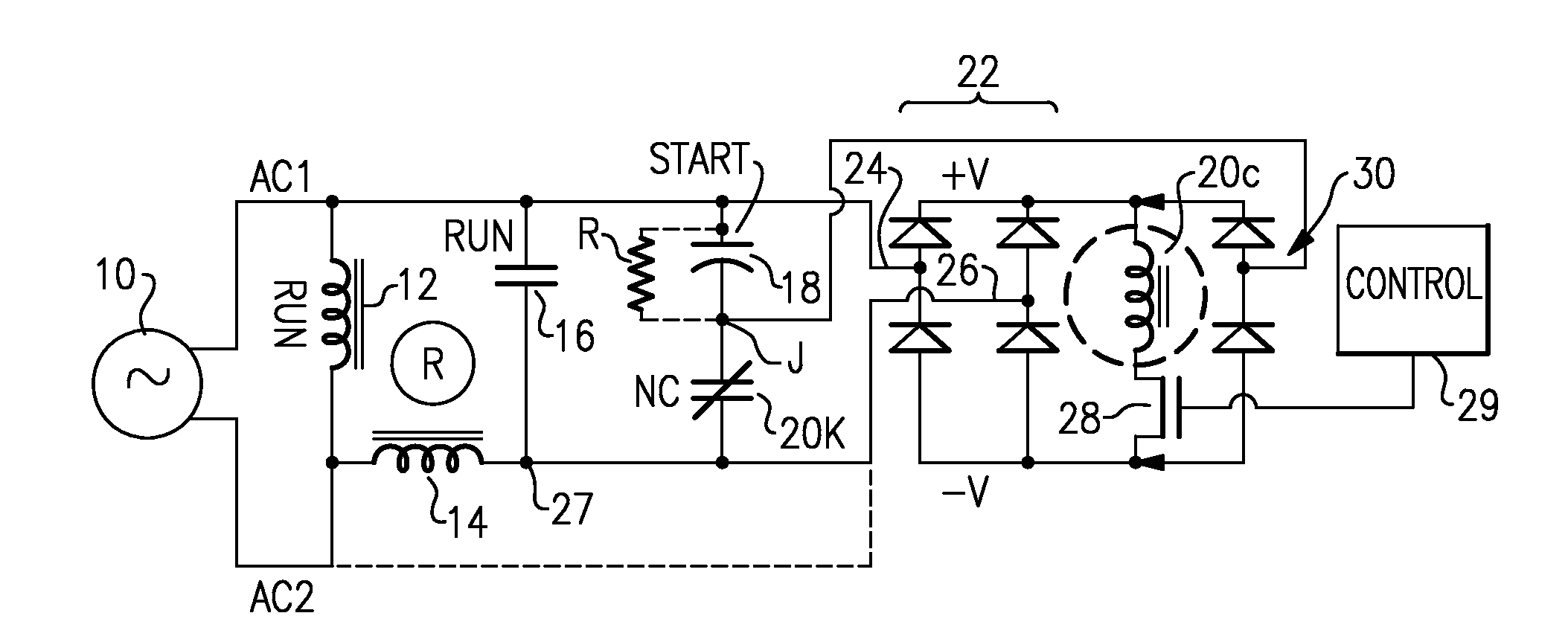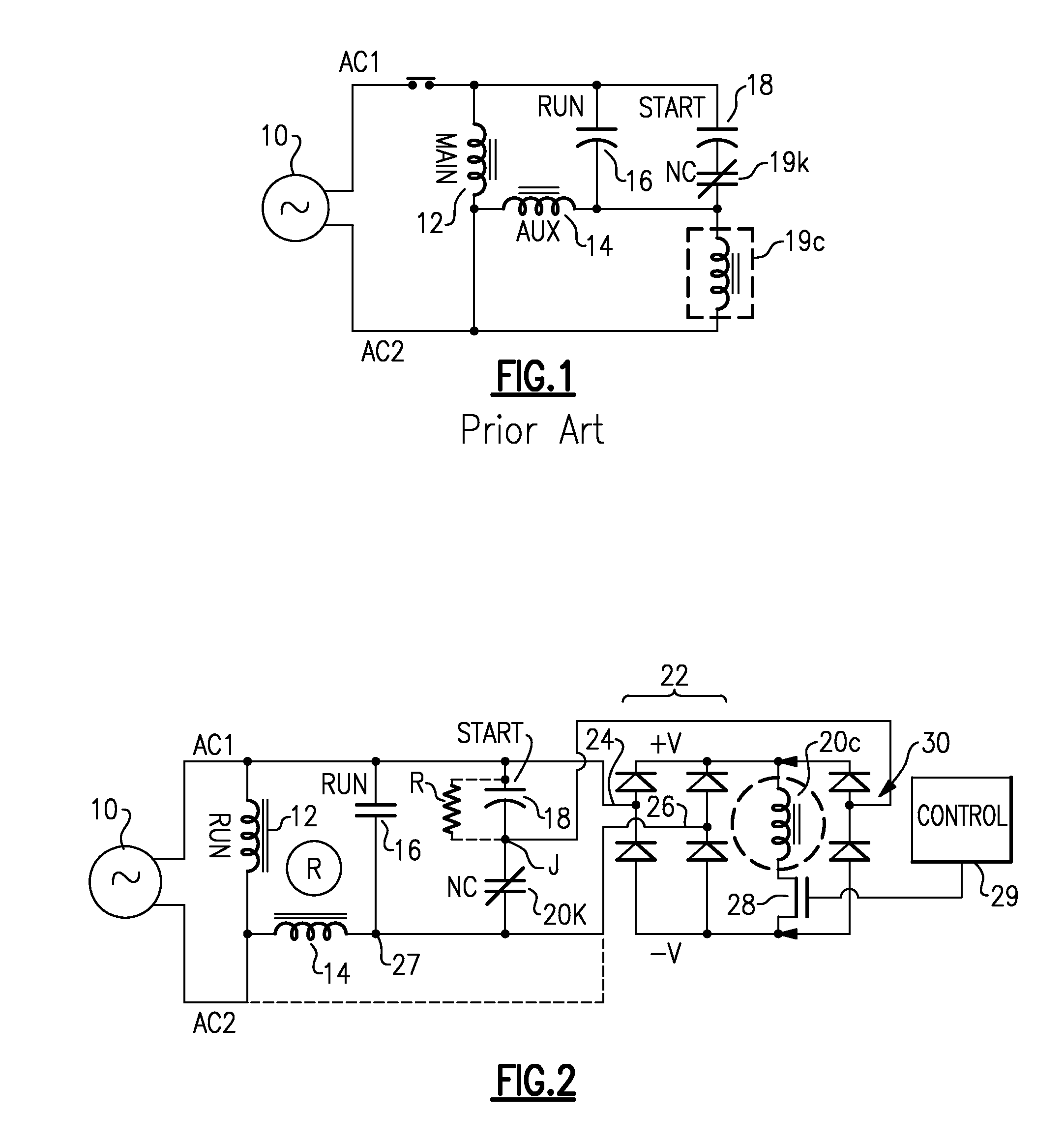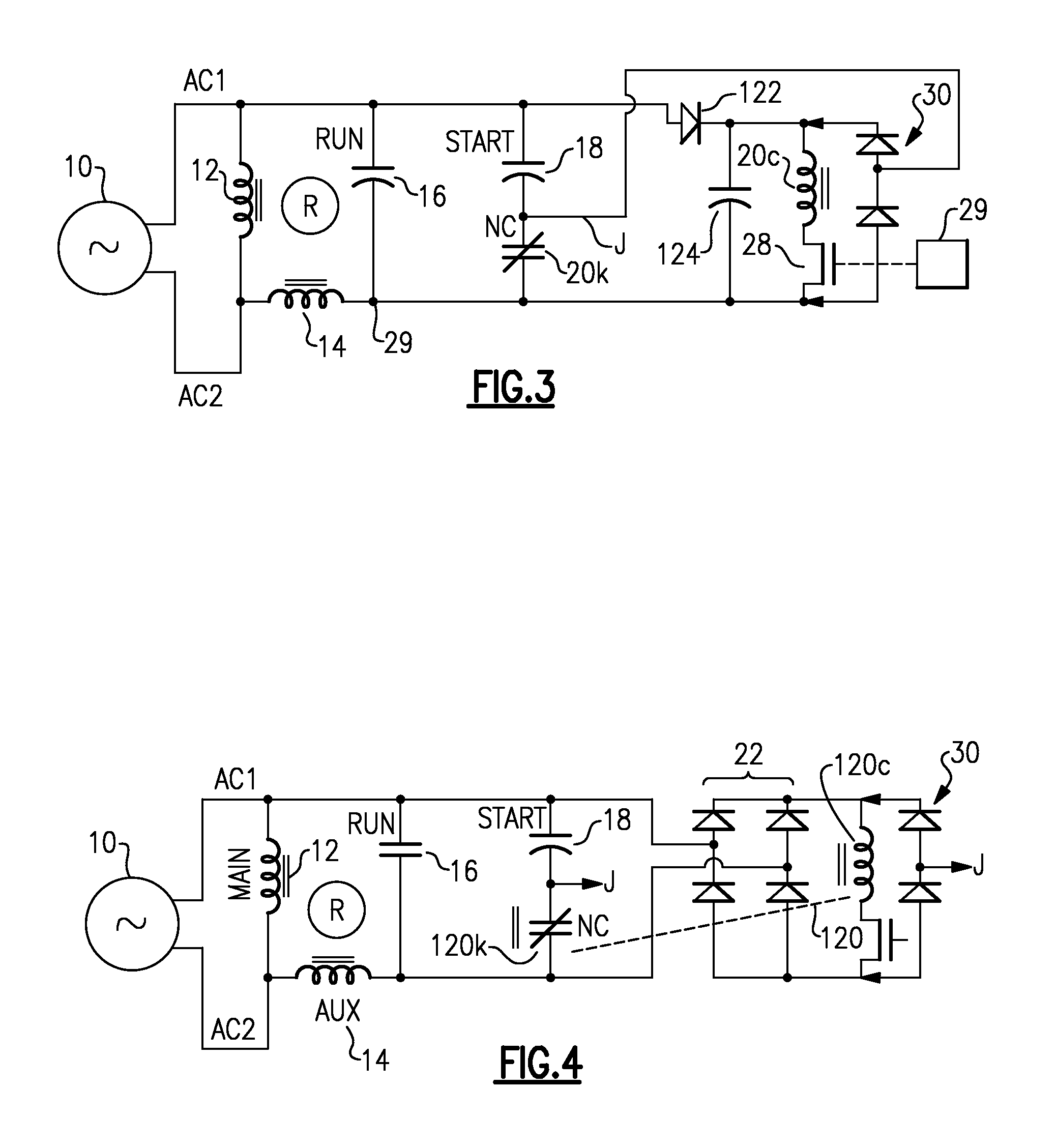Motor Start Circuit with Capacitive Discharge Protection
a technology of capacitive discharge protection and motor start circuit, which is applied in the direction of polyphase induction motor starter, emergency protective circuit arrangement, dynamo-electric converter control, etc., can solve the problems of relay switch chatter, relay switch melt, and motor fuse, and achieve the effect of discharging through the relay winding
- Summary
- Abstract
- Description
- Claims
- Application Information
AI Technical Summary
Benefits of technology
Problems solved by technology
Method used
Image
Examples
Embodiment Construction
[0021]With reference now to the Drawing, FIG. 1 shows schematically a motor start arrangement according to the prior art. Here, an AC power source 10 supplies single-phase AC power to a pair of AC power conductors AC1 and AC2. A run winding 12 of the motor armature is connected between these AC power conductors. An auxiliary winding or start winding 14 is shown here with a first end connected to one of the AC power conductors AC2 and at a second end coupled through a run capacitor 16 to the other AC winding AC1. A start capacitor 18 is connected in a series with a normally-closed relay switch 19k between the AC power conductor AC1 and the second end of the auxiliary winding or coil 14. An AC relay actuator coil 19c, which is magnetically coupled to the relay switch 19k, is placed with one end at the junction of the start capacitor 18 and the relay switch 19k and with the other end to the second power conductor AC2. A protective thermal switch S is shown in line in AC power conductor...
PUM
 Login to View More
Login to View More Abstract
Description
Claims
Application Information
 Login to View More
Login to View More - R&D
- Intellectual Property
- Life Sciences
- Materials
- Tech Scout
- Unparalleled Data Quality
- Higher Quality Content
- 60% Fewer Hallucinations
Browse by: Latest US Patents, China's latest patents, Technical Efficacy Thesaurus, Application Domain, Technology Topic, Popular Technical Reports.
© 2025 PatSnap. All rights reserved.Legal|Privacy policy|Modern Slavery Act Transparency Statement|Sitemap|About US| Contact US: help@patsnap.com



